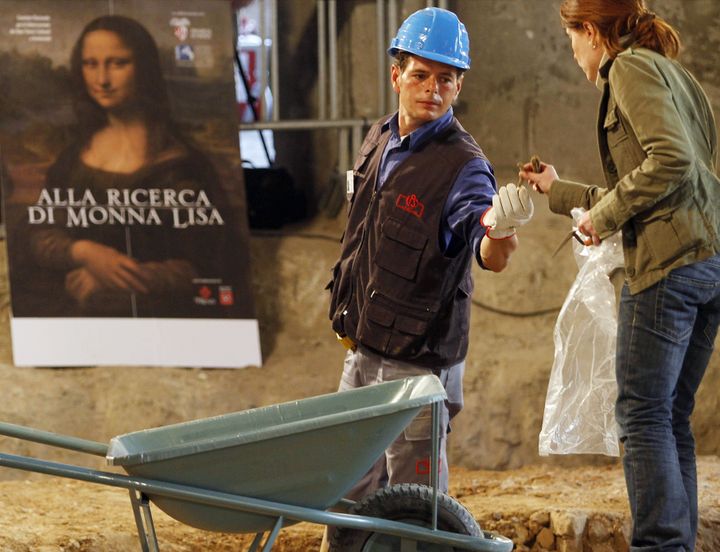
History.com - Archaeologists in Florence, Italy, are digging for the bones of the woman who may have sat for Leonardo da Vinci’s iconic and enigmatic “Mona Lisa,” which now hangs in the Louvre. With the help of ground-penetrating radar machines, they are on the verge of unsealing a tomb thought to contain the remains of Lisa Gherardini del Giocondo, the most widely accepted candidate for the world-renowned painting’s model. The team hopes that facial reconstruction technology will finally put a name to one of the most recognizable and cryptic expressions in portraiture.
Over the years, scholars have debated the true inspiration behind what may be the most famous half-smile in history. Proposed sitters for the “Mona Lisa” have included da Vinci’s mother Caterina, Princess Isabella of Naples, a Spanish noblewoman named Costanza d’Avalos and Cecilia Gallerani, who posed for an earlier painting, “The Lady With an Ermine.” Some of the more provocative theories emphasize the subject’s masculine facial features, suggesting that da Vinci based the portrait on his own likeness or that of his longtime apprentice and possible lover, Gian Giacomo Caprotti, known as Salai, who inherited the work after his mentor’s death. (In February 2011, the art historian Silvano Vinceti, who is leading the current dig, intriguingly pointed out that the title “Mona Lisa” could be interpreted as an anagram for “Mon [French for ‘my’] Salai.”)
In 2008, researchers at Heidelberg University announced they had cracked the puzzle of Mona Lisa’s identify after finding a handwritten note in the margin of a 500-year-old manuscript, penned by a Florentine clerk who admired da Vinci. The note, dated October 1503, states that the artist was working on a portrait of Lisa Gherardini del Giocondo, a wealthy silk merchant’s wife whom art historians have long considered the leading candidate for the famous painting’s model. When da Vinci bequeathed the portrait to Salai, he referred to it as “La Gioconda,” the Italian word for playful, which may also have been a pun on the feminine form of Gherardini’s married name.
More Popular Articles From History.com: